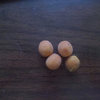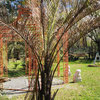Sabal Minors are be promoted comercially in Brooklyn
brooklyngreg
14 years ago
Sponsored
Leading Interior Designers in Columbus, Ohio & Ponte Vedra, Florida
Can you believe they are selling sabal minors in Lowes here in Brooklyn. First time I ever saw a cold tolerant palm available comercailly here and they are distiguished by their blue containers. I know a guy who planted one on the PA NJ state line in central Jersey and its still alive since 1991 - it is a south facing cliff.


tropicalzone7
brooklyngregOriginal Author
tropicalzone7
shawn_nyc
gusolie
tropicalzone7
brooklyngregOriginal Author
nycjoe
tropicalzone7
statenislandpalm7a
jimhardy
tropicalzone7
ednewman
tropicalzone7
nycjoe
tropicalzone7
statenislandpalm7a
tropicalzone7
jimhardy
brooklyngregOriginal Author
palmloverny
User
tropicalzone7
tropicalzone7
brooklyngregOriginal Author